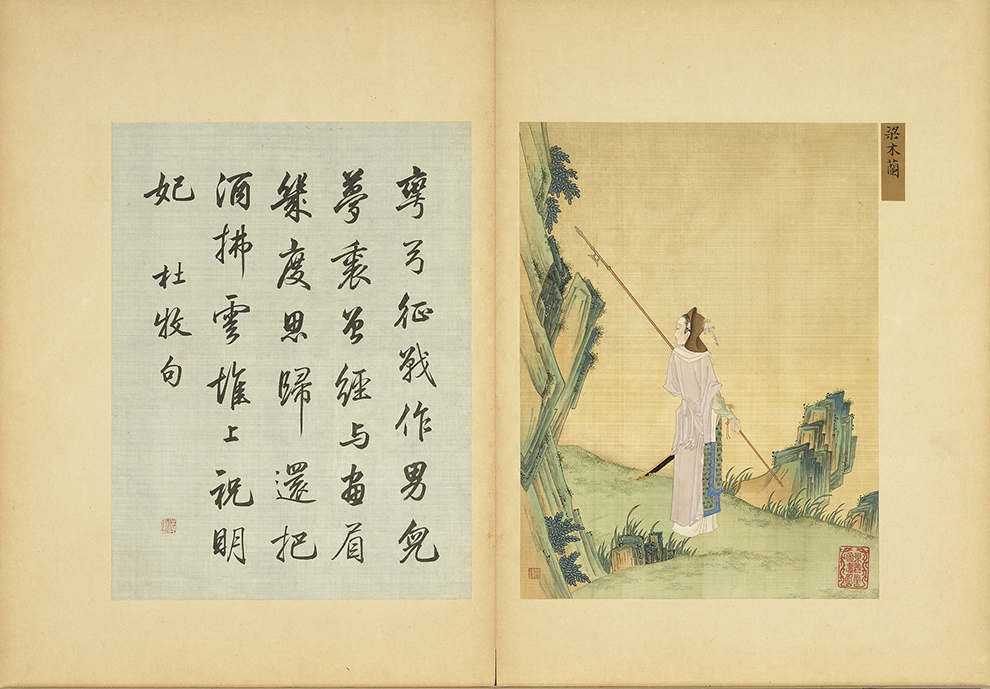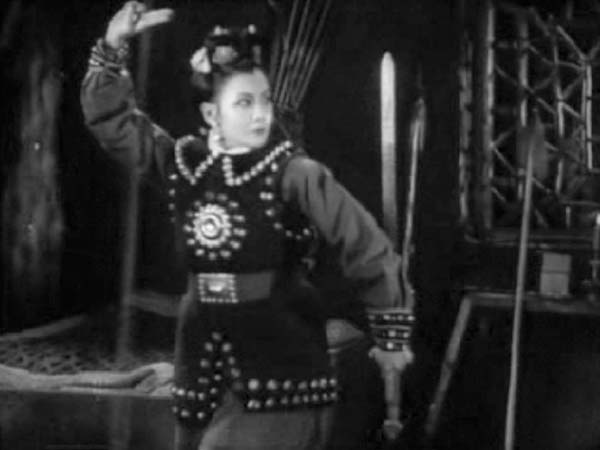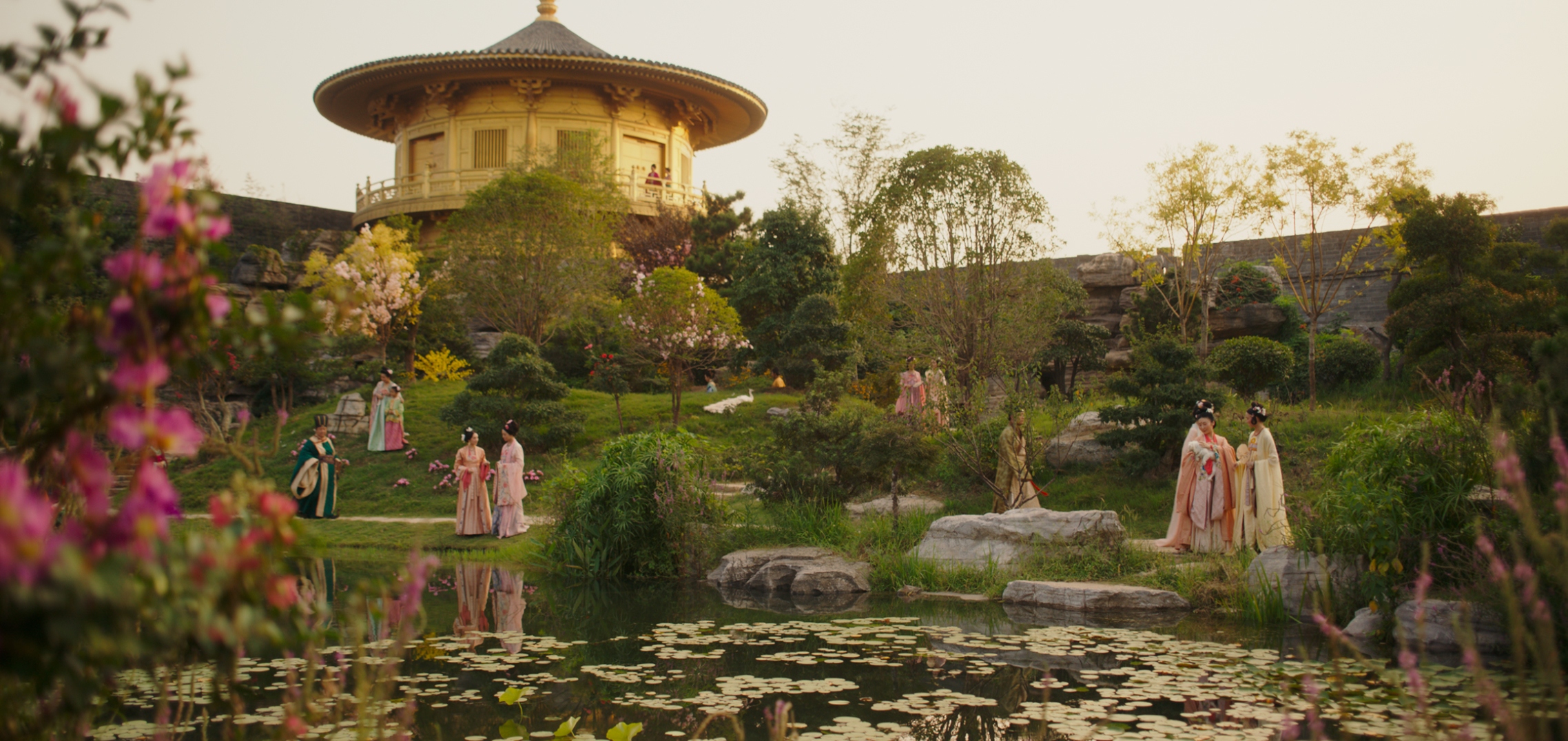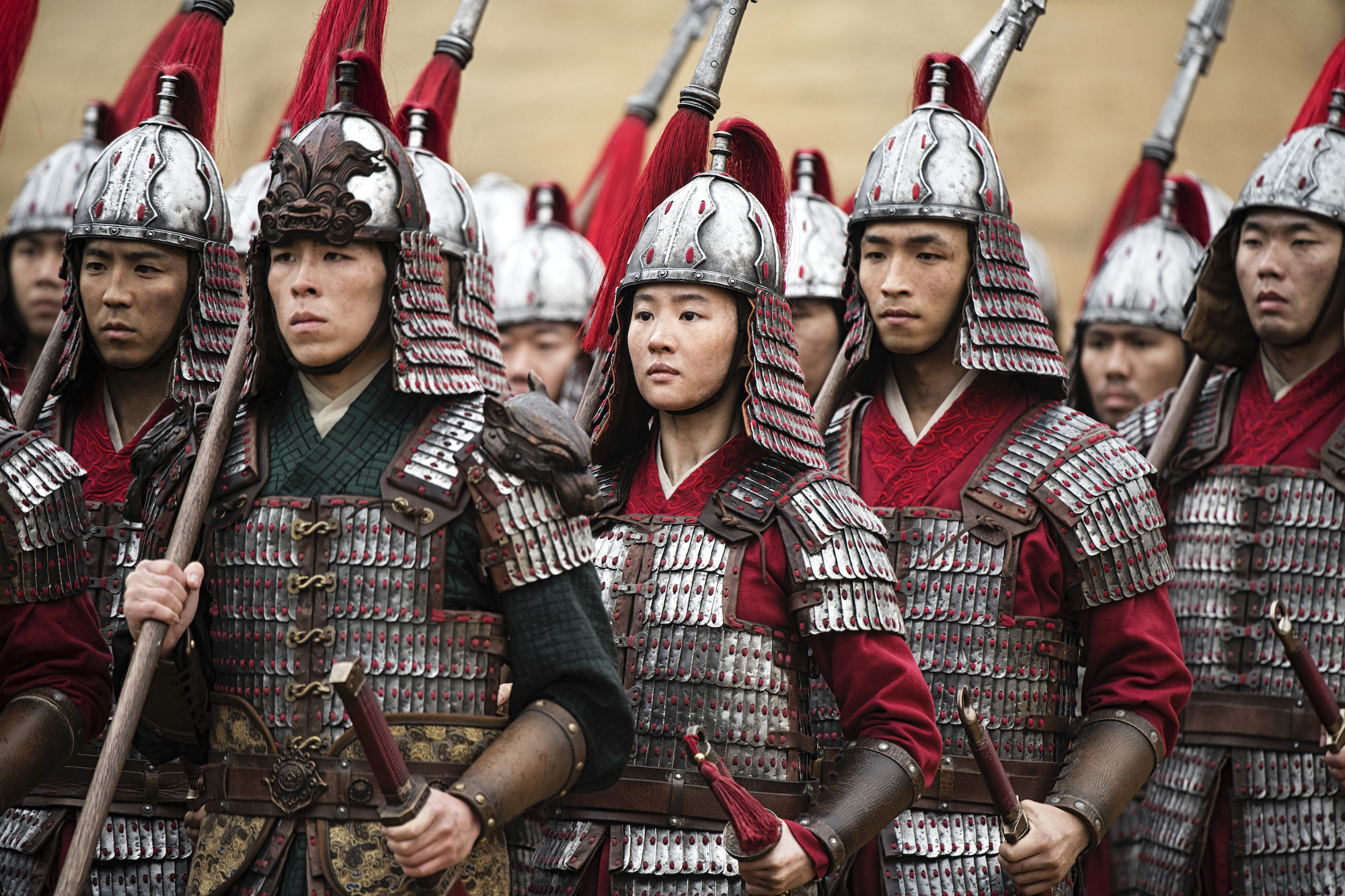Featuring intense action sequences and sweeping cinematography, the latest Mulan trailer shows the titular heroine vowing to “bring honor to us all,” leading an army of men into battle against fierce opponents. The live-action movie has faced a battle of its own: originally scheduled for cinematic release in March, Mulan was delayed due to the COVID-19 pandemic and is now set to release on Disney’s streaming service Disney+ for $29.99, on Sept. 4, on top of a $6.99 subscription.
Initial reactions to the film after its premiere in L.A. in March were largely positive, with critics calling it Disney’s best live-action offering to date. And in an era where Hollywood is backing more Asian and Asian-American stories, Mulan is notably the first Disney-branded film to feature an all-Asian cast, with well-known Chinese and Hong Kong-born actors Liu Yifei, Jet Li and Tzi Ma in leading roles. Director Nikki Caro’s version of the traditional ballad has been celebrated as a feminist retelling, cutting out a romantic subplot from the animated film and focusing on Mulan’s character as a formidable woman warrior. Caro is also one of only four women ever to have directed a live action film with a budget of more than $100 million, with Mulan‘s budget at more than $200 million.
Yet the film has also faced controversy since its first trailer dropped in August 2019. Liu Yifei, its principal star, voiced support for the Hong Kong police on social media during the height of last year’s pro-democracy protests in the city, prompting calls to boycott the film. At the film’s European premiere in central London in March, days before its release was postponed, masked protesters gathered outside the screening venue holding signs calling for a boycott and mocking up the film’s promotional poster as an advert for the Hong Kong police. On the film’s release in September, controversy and calls for a boycott intensified after viewers noted that the film’s credits thanked municipal authorities in Xinjiang, where detention camps and human rights abuses of Uighur Muslims have been well documented.
While campaigns to both support and boycott Mulan took off on social media, other observers were quick to point out the historical inaccuracies of the trailer, particularly in its costume design and architectural setting, which appear to be mismatched for the time period and geographical location of the original story.
The question of historical accuracy, and whether the film should strive to be completely faithful to the original legend, is not so simple to answer. Mulan is based on a tale that’s been adapted over more than a thousand years, and that has contested origins to begin with. Here, we lay out the film’s complex origins, how the story has changed over time, and what the new adaptation says about representation.
Origins of the legend
The original Mulan story is quite different from both Disney’s 1998 animated film and the new live-action movie. The earliest printed version of the story still in existence today was first featured in an anthology from the 12th century, known as the Ballad of Mulan. It’s a short poem thought to have originated as a folk tale in the fourth or fifth century because of references to the period, known as the Northern Wei dynasty, which lasted from the fourth through the early sixth centuries.
“Anything not contained in this original poem has been made up by much later authors, and cannot be historically substantiated,” says Sanping Chen, an independent scholar and author of Multicultural China in the Early Middle Ages. This original version follows a simplified storyline of the tale many are familiar with (without the talking dragon introduced in the animated film, of course). In the tale, Mulan’s father is called to battle, and she volunteers to go in his place. While the original poem doesn’t describe her father as old or ailing, as later versions did, it says that there were no adult sons in the household to take his place. After 12 years of war, Mulan returns to her hometown along with her comrades, who are shocked to learn that she is a woman.
This first version ends with the quatrain:
The male hare wildly kicks its feet;
The female hare has shifty eyes,
But when a pair of hares run side by side,
Who can distinguish whether I in fact am male or female?
Overall, this version is about Mulan “just getting the job done,” says Shiamin Kwa, associate professor of East Asian languages and cultures and comparative literature at Bryn Mawr College and co-author of Mulan: Five Versions of a Classic Chinese Legend. This version emphasizes the aspects of gender, such as starting by Mulan doing weaving work, which was traditionally a task for women—a facet of the story that would evolve in later iterations.

The character’s ethnic origins
The Northern Wei dynasty was established by a formerly nomadic group named the Tuoba, a clan of the Xianbei people, who came from northern China and likely spoke either a Turkic or proto-Mongolian language, rather than a native Chinese dialect. The Tuoba conquest of northern China was of huge historical significance, akin to the Norman Conquest of England, says Chen. “The emperor is an important person in [The Ballad of Mulan], but he’s not called by his Chinese name,” says Chen. Rather than the Chinese title of huangdi, the emperor is referred to as “Khan,” “Kehan” or “Kaghan,” depending on the translation—a title used to refer to Genghis Khan and other Mongol leaders. Chen also says that the title of the poem and the fact that it is named for the female character reflects the respected status that women held in these nomadic societies.
While the social and cultural milieu of the Northern Wei dynasty provided the context for the tale’s origins, there’s no corroborative evidence to confirm that Mulan was ever a real person. Over time, the story and character’s nomadic and tribal origins have significantly changed from the original. Mulan has been depicted as Han Chinese in adaptations over the last century, and this process of “sinification,” or coming under the influence of Han Chinese culture, of the story goes as far back as the Tang dynasty, which spanned from the 7th to the 10th centuries. While the name Mulan translates to “magnolia” in Chinese, Chen’s research traces the name’s roots back to its Touba origins, and suggests that it’s actually a masculine name. “Otherwise, how could Mulan have hidden her true gender for twelve years in the army?” says Chen. “To the educated Chinese gentry, the meaning of ‘Mulan’ is utterly different. One may say the true meaning of the name Mulan is a forgotten legacy of the Tuoba.”

How the story has changed and endured over time
As well as the changing interpretations of Mulan’s ethnicity over the centuries, the narrative has also changed over time. For around a thousand years, the story more or less stayed the same, a simple, easy-to-understand folk poem popular with the Chinese people. The first known adaptation was in the 16th century, by playwright Xu Wei. The Heroine Mulan Goes to War in Her Father’s Place dramatized several aspects of the original poem. It emphasized footbinding, which is not mentioned in the original, as the custom was not widely practiced during the Northern Wei dynasty. “But in the 16th century, that was the major marker of how a woman was different from a man,” says Kwa. “The 16th century play would emphasize that aspect in a way that the original poem would not, and the play transported the setting to the time that seemed relevant.”
The character was later included in a popular 17th-century novel about the Sui and early Tang dynasties, which was a marked departure from the poem. Here, Mulan commits suicide rather than live under a foreign ruler, meeting a tragic end. This emphasis on the ethnic portrayal of the character also came to the fore in portrayals of Mulan during China’s Republican period. Driven by China’s active moving picture industry and a growing nationalism, several film adaptations of the story were produced in the 1920s and ’30s, the most successful being 1939’s Mulan Joins the Army, made during the Japanese occupation of China. This version played on gender as well as ideas of national identity against a complicated political backdrop, and some have argued that the renewed interest it sparked in the Mulan story was partly due to its nationalistic overtones and critique of the occupation. “In addition to these funny scenes where Mulan is now dressing up in her guise as a male soldier, there’s also a lot of playing on this idea of not just telling apart male from female, but telling apart a ‘barbarian’ from a Chinese person,” says Kwa. “That becomes just as important or maybe parallel to the question of other people not being able to tell that she’s a girl.”

Kwa says that looking back over how the character has evolved over the centuries is interesting in the context of today’s idea of what makes China ‘China,’ and the idea of a patriotic heroine who is fighting against invading outsiders. At different points in time, the story’s emphasis on a sense of belonging shifted, encompassing both themes of women’s liberation and feminism and divisions along more overt ethnic identifications. “[These adaptations] speak on a specific level at specific times to different needs from different audiences,” she says, adding that the fundamental appeal of the tale speaks to a universal desire to be recognized for who we are, and also an understanding that we can’t always control how others see us.
Representation and adaptation in the 2020 version
Looking back at the original Mulan legend helps explain the criticism over certain stylistic choices in the film, such as the costume and the architecture. Some argue that adaptations of lots of different historical stories change over time and aren’t always accurate. “I feel like we are surrounded by adaptations of all kinds. Do we get angry at Joyce’s Ulysses for not being the accurate historical representation of Homer’s Odyssey?” asks Kwa.

At the film’s world premiere in March (its general release was postponed soon thereafter due to COVID-19), Mulan‘s costume designer Bina Diageler told Variety that the Tang dynasty was the inspiration for the film’s costumes, adding that the research included trips to European museums with Chinese departments and a three-week visit to China. Her comments immediately sparked backlash on social media and beyond, with some highlighting the role of costume designer in particular as a missed opportunity to hire someone who is more of an expert on the culture to accurately reflect the story’s origins. Others highlighted the architecture of Mulan’s home in the movie, which appeared to be a tǔlóu— a structure used as a communal residence by Hakka people in southern China and built from the 13th to the 20th centuries, which does not align with the historical and geographical setting of the original folk tale.
For some, the questions over adaptation and historical accuracy are inextricable from the issue of representation, both onscreen and behind the camera. While the film has been praised for its all-Asian cast, several of whom are of Chinese descent, there has been criticism over a perceived lack of representation among the film’s crew members, and what this means for the film and its message as a whole. “I do worry that the Mulan that we may see, how ‘Mulan’ is she?” says actor Lucy Sheen. “Is she a white version, a Eurocentric, colonialistic version of what some people, who are in the fortunate place to have commissioned this project, see?” Sheen, a British actor of East Asian descent, thinks the Mulan story has had enduring, universal appeal because it explores a journey of self discovery, and shows another facet of the female character as a warrior. “I will be from that point of view be interested to see how far this live action version has gone to make it palatable to be all things to all people, which you never can be,” she tells TIME.

“As an historian, to me it’s very misleading. The story presented in the film is definitely not what the true history should be,” says Chen, who, like Kwa, has only seen the trailer for the film. “On the latest version, I cannot see much beyond an undertaking driven largely by commercial interests.” A live-action version of the animated film with an all-Asian cast is likely to appeal in China, Hollywood’s biggest overseas market, though some viewers in the mainland too have voiced dissatisfaction with the film’s setting and the character’s representation.
For others, the strength of the adaptation lies in how well the film conveys the message of the Mulan story. “Ultimately, the success of an adaptation is how well it resonates with its audience, rather than how well it supports or replicates an original,” says historian Kwa, adding that the transformation from the original poem to the 16th-century play was also drastic, much like the creative license that Disney appears to have taken with the story. Kwa says that while concerns over representation are legitimate and need to be addressed, there’s more to consider when thinking about the authenticity of adaptations. And even if the new versions are disappointing, there’s still excitement in returning to at least the idea of a millennia-old tale. “For me, the fact that there continues to be an audience for Mulan is delightful actually,” says Kwa. “We like to return to stories and we find something meaningful in stories that are related to the past.”
More Must-Reads From TIME
- The 100 Most Influential People of 2024
- Coco Gauff Is Playing for Herself Now
- Scenes From Pro-Palestinian Encampments Across U.S. Universities
- 6 Compliments That Land Every Time
- If You're Dating Right Now , You're Brave: Column
- The AI That Could Heal a Divided Internet
- Fallout Is a Brilliant Model for the Future of Video Game Adaptations
- Want Weekly Recs on What to Watch, Read, and More? Sign Up for Worth Your Time
Contact us at letters@time.com